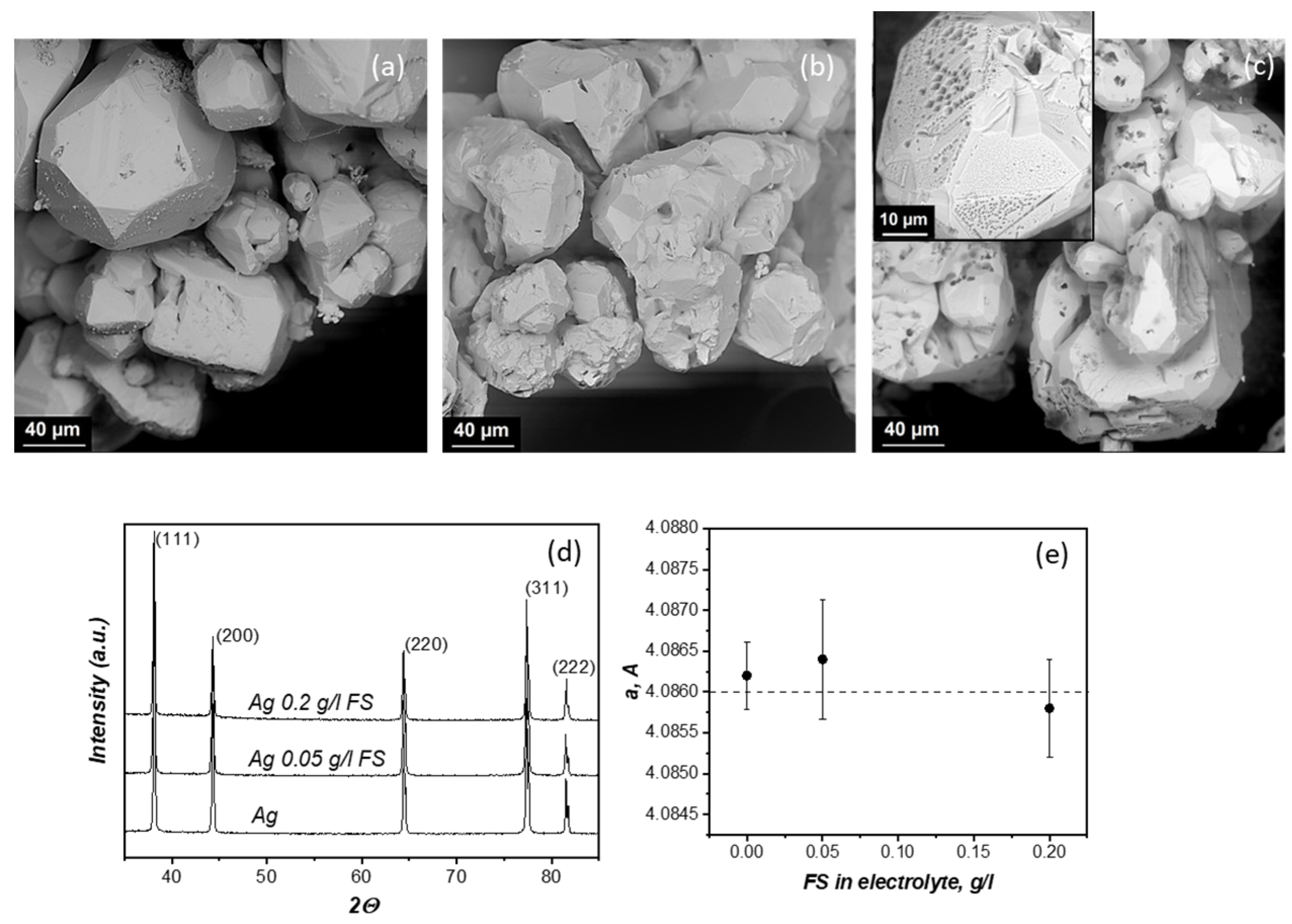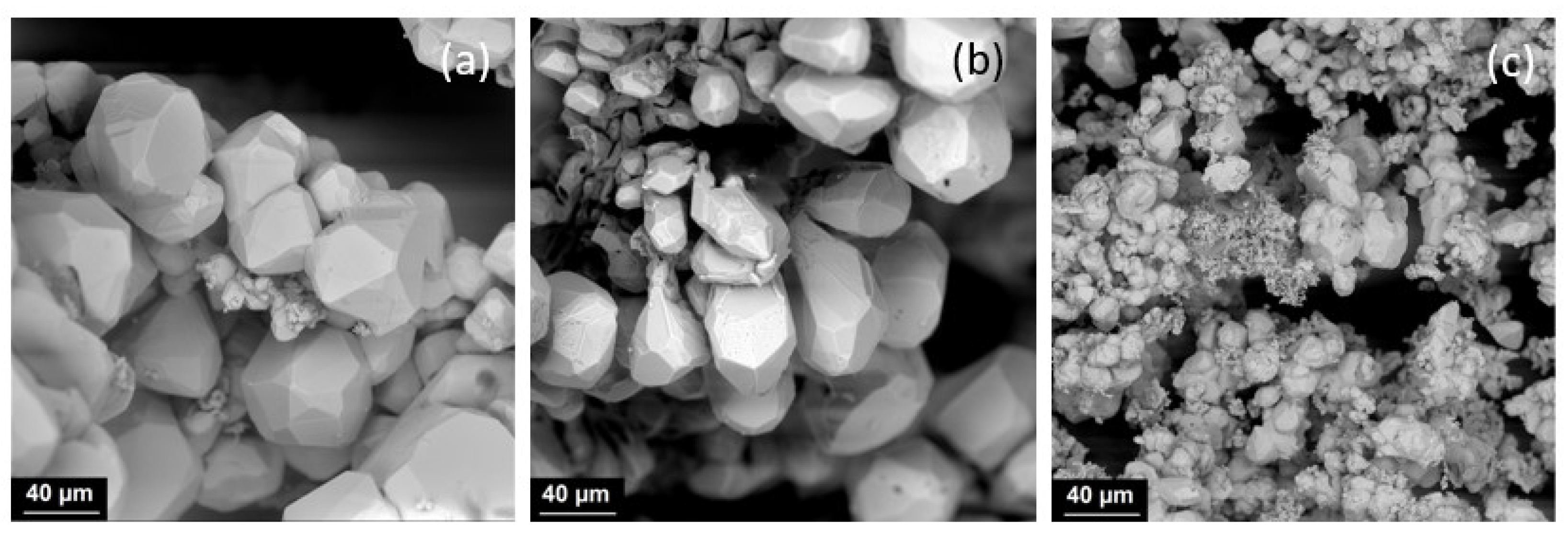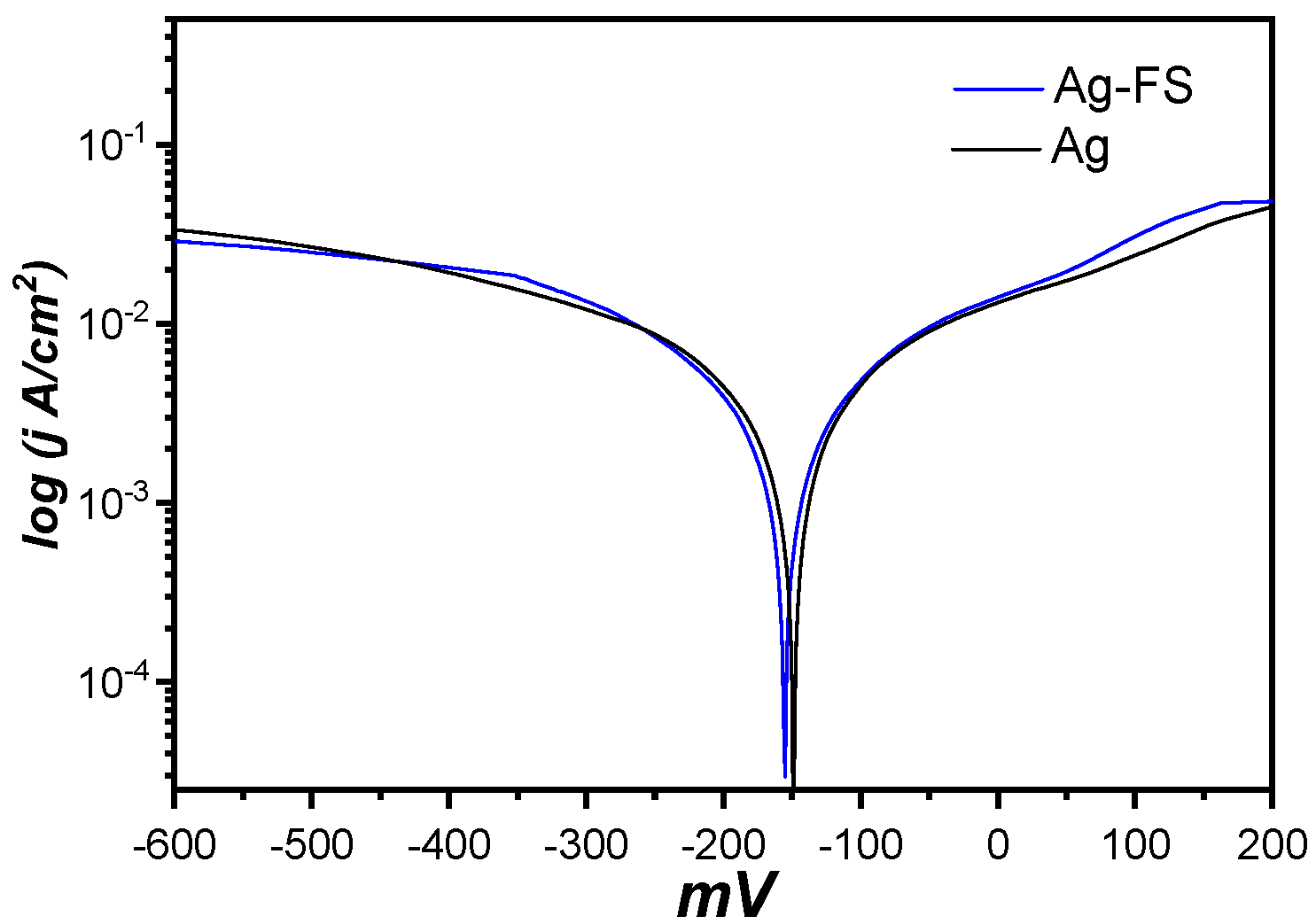Silver-Matrix Composite with Fullerene Soot Nanoparticles Produced by Electrodeposition
Abstract
:1. Introduction
2. Materials and Methods
3. Results and Discussion
4. Conclusions
Author Contributions
Funding
Data Availability Statement
Acknowledgments
Conflicts of Interest
References
- Huang, W.; Yu, H.; Wang, L.; Wu, X.; Ouyang, C.; Zhang, Y.; He, J. State of the art and prospects in sliver- and copper-matrix composite electrical contact materials. Mater. Today Commun. 2023, 37, 107256. [Google Scholar] [CrossRef]
- Zhang, Y.; Wang, W. A facile fabrication of Ag/SiC composite coating with high mechanical properties and corrosion resistance by electroless plating. Mater. Today Commun. 2023, 36, 106737. [Google Scholar] [CrossRef]
- Cusma, A.; Sebastiani, M.; De Felicis, D.; Basso, A.; Bemporad, E. Study on the Correlation between Microstructure Corrosion and Wear Resistance of Ag-Cu-Ge Alloys. Coatings 2015, 5, 78–94. [Google Scholar] [CrossRef]
- Katzensteiner, A.; Rosalie, J.M.; Pippan, R.; Bachmaier, A. Synthesis of nanodiamond reinforced silver matrix nanocomposites: Microstructure and mechanical properties. Mater. Sci. Eng. A 2020, 782, 139254. [Google Scholar] [CrossRef]
- Zhao, Q.; Tan, S.; Xie, M.; Liu, Y.; Yiet, J. A study on the CNTs-Ag composites prepared based on spark plasma sintering and improved electroless plating assisted by ultrasonic spray atomization. J. Alloys Compd. 2018, 737, 31–38. [Google Scholar] [CrossRef]
- Li, A.; Xie, M.; Yang, Y.; Zhang, J.; Wang, S.; Chen, Y.; Zhou, W. Effect of CNTs content on the mechanical and arc-erosion performance of Ag-CNTs composites. Diam. Relat. Mater. 2022, 128, 109211. [Google Scholar] [CrossRef]
- Larionova, N.S.; Nikonova, R.M.; Lad’yanov, V.I.; Ul’yanov, A.L.; Mikheev, K.G. Structural changes of fullerite C60/70 during mechanosynthesis of copper and iron based composites. Adv. Powder Technol. 2019, 30, 1724–1728. [Google Scholar] [CrossRef]
- Akbarpour, M.R.; Alipour, S.; Farvizi, M.; Kim, H.S. Mechanical, tribological and electrical properties of Cu-CNT composites fabricated by flake powder metallurgy method. Arch. Civ. Mech. Eng. 2019, 19, 694–706. [Google Scholar] [CrossRef]
- Arai, S.; Kikuhara, T.; Shimizu, M.; Horita, M. Electrodeposition of Ag/CNT Composite Films from Iodide Plating Baths. J. Electrochem. Soc. 2020, 167, 122515. [Google Scholar] [CrossRef]
- Koltsova, T.; Bobrynina, E.; Vozniakovskii, A.; Larionova, T.; Klimova-Korsmik, O. Thermal Conductivity of Composite Materials Copper-Fullerene Soot. Materials 2022, 15, 1415. [Google Scholar] [CrossRef] [PubMed]
- Zelensky, V.A.; Zabelin, S.F.; Ankudinov, A.B.; Tregubova, I.V. The Study of Mechanical and Technological Properties of Dispersion-Strengthened Electric-Based Materials on the Base of Composite Powder Argent. Sci. Notes ZabGU 2015, 3, 59–69. [Google Scholar]
- Radmilovic, V.; Popov, K.I.; Pavlovic, M.G.; Dimitrov, A.A.; Hadzi Jordanov, S. The mechanism of silver granular electrodeposits formation. J. Solid State Electrochem. 1998, 2, 162–169. [Google Scholar] [CrossRef]
- Avramovic, L.; Pavlovic, M.M.; Maksimovic, M.M.; Vukovic, M.; Stevanovic, J.S.; Bugarin, M.; Nikolic, N. Comparative Morphological and Crystallographic Analysis of Electrochemically- and Chemically-Produced Silver Powder Particles. Metals 2017, 7, 160. [Google Scholar] [CrossRef]
- Dimitrov, A.T.; Jordanov, S.H.; Popov, K.I.; Pavlovic, M.G.; Radmilovic, V. Electrodeposition of Ag from nitrate solutions: Part I. Effect of phosphate ions on morphology. J. Appl. Electrochem. 1998, 28, 791–796. [Google Scholar] [CrossRef]
- Ruoff, R.S.; Thornton, T.; Smith, D. Density of fullerene containing soot as determined by helium pycnometry. Chem. Phys. Lett. 1991, 186, 456–458. [Google Scholar] [CrossRef]
- Bakshi, S.R.; Lahiri, D.; Agarwal, A. Carbon Nanotube Reinforced Metal Matrix Composites—A Review. Int. Mater. Rev. 2010, 55, 41–64. [Google Scholar] [CrossRef]
- Yoo, S.J.; Han, S.H.; Kim, W.J. A combination of ball milling and high-ratio differential speed rolling for synthesizing carbon nanotube/copper composites. Carbon 2013, 61, 487–500. [Google Scholar] [CrossRef]
- Vandeperre, L.J.; Clegg, W.J. The Correlation between Hardness and Yield Strength of Hard Materials. Mater. Sci. Forum 2005, 492–493, 555–560. [Google Scholar] [CrossRef]
- Dieter, G. Mechanical Metallurgy, 3rd ed.; McGraw-Hill: New York, NY, USA, 1986; p. 751. [Google Scholar]





Disclaimer/Publisher’s Note: The statements, opinions and data contained in all publications are solely those of the individual author(s) and contributor(s) and not of MDPI and/or the editor(s). MDPI and/or the editor(s) disclaim responsibility for any injury to people or property resulting from any ideas, methods, instructions or products referred to in the content. |
© 2023 by the authors. Licensee MDPI, Basel, Switzerland. This article is an open access article distributed under the terms and conditions of the Creative Commons Attribution (CC BY) license (https://creativecommons.org/licenses/by/4.0/).
Share and Cite
Koltsova, T.S.; Popovkina, V.A.; Trusova, V.A.; Bobrynina, E.V.; Tolochko, O.V. Silver-Matrix Composite with Fullerene Soot Nanoparticles Produced by Electrodeposition. Metals 2024, 14, 21. https://doi.org/10.3390/met14010021
Koltsova TS, Popovkina VA, Trusova VA, Bobrynina EV, Tolochko OV. Silver-Matrix Composite with Fullerene Soot Nanoparticles Produced by Electrodeposition. Metals. 2024; 14(1):21. https://doi.org/10.3390/met14010021
Chicago/Turabian StyleKoltsova, Tatiana S., Valeriia A. Popovkina, Victoria A. Trusova, Elizaveta V. Bobrynina, and Oleg V. Tolochko. 2024. "Silver-Matrix Composite with Fullerene Soot Nanoparticles Produced by Electrodeposition" Metals 14, no. 1: 21. https://doi.org/10.3390/met14010021
APA StyleKoltsova, T. S., Popovkina, V. A., Trusova, V. A., Bobrynina, E. V., & Tolochko, O. V. (2024). Silver-Matrix Composite with Fullerene Soot Nanoparticles Produced by Electrodeposition. Metals, 14(1), 21. https://doi.org/10.3390/met14010021






